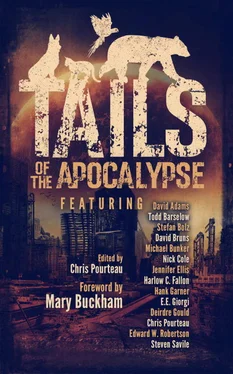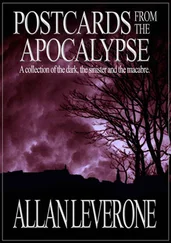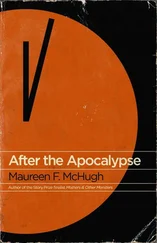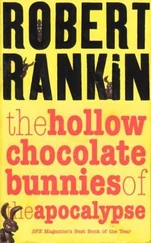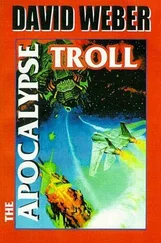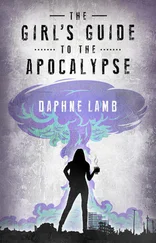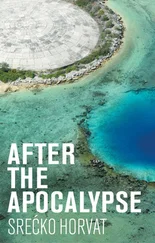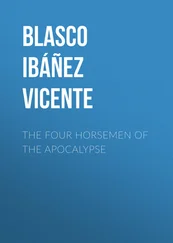I look at the bear. She’s just a shell now. The light has left her eyes. My chest feels tight, knowing she’s gone. But thinking of where she might be—in a land where she can be reunited with her cubs, where they can eat fish and berries to their hearts’ content—softens the loss opening inside me.
I look up at Gunther. “I found Bode’s body.”
Gunther turns his head away, but not before I see the pain flash through his eyes.
“There are five of us left,” Gunther says. “Six, if we count you.”
“Do you want to count me?” I ask, afraid to hear his answer. Afraid that it will damn me to a life alone, a life I would have gladly chosen only a few days before. A life that terrifies me now.
Gunther shakes his head and sighs. “Do you want to spend your last days here with the dead?” he asks. “Or with me? With the living?”
I stare for a long moment at the bear, stiff and cold in death. The bear who taught me everything I know about caring, about bonding. I look up at Gunther. His eyes are gleaming. He seems eager to hear the answer I want to say.
“With you,” I tell him, reaching for his outstretched hand. “I want to go with you.”
A Word from Harlow C. Fallon
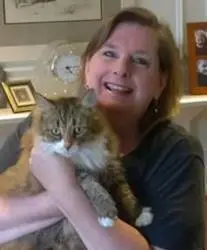
Harlow and Korey.
As you can see by the picture, I love cats. Since I was a baby, cats—often several at a time—have been a part of my life. I’m currently owned by Korey, who isn’t very social, bestowing her attention only when the mood strikes. I was lucky to get a picture of us together as she was wriggling out of my arms. Not in the mood.
So why did I write a story about a bear? Maybe it was to help purge my fear of bears, which I’m pretty sure stems from a close encounter I had with one when I was three and living in Alaska. I’m also pretty sure the encounter wasn’t all that close, but grew exponentially in power and influence over the years, as memories often do.
Don’t get me wrong; I find bears to be beautiful and fascinating creatures, but I don’t want to live anywhere close to their natural habitat.
I enjoy writing stories that don’t always answer every question in the end. Anya, the main character in my story, also has a close encounter with a bear, and it changes her life. Anya is afflicted with a sickness that slowly consumes her body and mind. Is Anya’s relationship with the bear real? Or is her encounter fabricated by her diseased imagination?
I’ll let you decide.
If you’d like to know more about my writing, you can find me on Facebook at https://www.facebook.com/harlowcfallonand on Amazon at http://amazon.com/author/harlowfallon.
Wings of Paradise
by Todd Barselow
The end of the world as the world knew it came rather suddenly. Humanity’s influence on the grand scale of things led to—as many had feared and predicted—a catastrophe in every way conceivable. Political espionage, corruption, and corporate greed ran roughshod over the Earth, destroying humanity in one fell swoop. Nearly every nation succumbed in a matter of hours, once the cascading Collapse began. Humanity went out without a bang, and for that matter, barely a whimper.
Of the seven billion people living when the world ended, only a few thousand souls survived—not even enough people to fill a modest football stadium or concert hall. Most survivors were living on outlying islands in the Philippines, Indonesia, and Malaysia and were thus spared—for a time. Within six months, most of them were gone too, victims of the plague unleashed by the Earth’s core in retribution for a century of cumulative abuse. Fracking for oil and natural gas was the undoing of man.
The Earth began repairing itself almost immediately. In short order, animals reclaimed dominance over their near-extinct Human masters with a swiftness impossible had more than a few Humans survived. One-time pets were now rulers of all they surveyed. Once removed from under the rule of mankind, animals’ natural instincts came to the fore. Unfettered by Human dominance, their intelligence developed rapidly.
Animals born natural enemies became amicable inhabitants of the same space. Without humanity encroaching and poaching, food and water became plentiful once again, lessening animosity between species. While hunters still hunted and prey still fed them, a harmony and balance unlike any seen before mankind’s ascension was restored.
But this tale isn’t just about endings. It’s also about beginnings.
Life in Davao City was always relatively easy, even before the Collapse. Then, with the people gone, paradise began living up to its name in earnest. While there were many animals living in Davao, two groups made up the majority—the Bat colony on Samal Island, who identified themselves as the Bats of Paradise; and the colony of Budgerigars, or simply Budgies, who identified themselves as the Birds of Paradise.
Budgies and Bats, while not normally enemies, shared an easy alliance in the renewed world. Both groups worked together toward mutual, comfortable survival. The common enemies of Bats and Budgies included Cats, Rats, and occasionally Dogs. In the months immediately following the Collapse, many Budgies were lost to raids by these predators, and likewise, Bats sometimes fell prey to the same raiders, if less often. And so the two flyers became natural allies for mutual protection.
When the alliance between Bats and Budgies was forged, a council was formed to manage it. Called the Wings of Paradise, it was composed of six members, three from each colony. Two of the three representatives were Elders, chosen for their knowledge and ability to exercise rational, clearheaded thought. The remaining member of each group was a Youngling, chosen for their flight skills, bravery, and willingness to learn.
All three of the Budgie council members—Max and Hettie, the Elders, and Vic, the Youngling—had been human pets before the Collapse. All the Bats came from the wild and so had little experience with Humans before their extinction, save with the visitors who’d snapped pictures of them at their main colony cave.
The oldest of the Bats was called Bongse. He was a skilled hunter and always knew where to find the best insects whenever the colony ventured out in search of sustenance. His fellow Elder on the council was Magsay, who’d given birth to many strong pups and was revered for her expertise in raising capable Bats, as well as for her hunting prowess. Whenever members of one of the colonies were sick or elderly and couldn’t hunt for themselves, it was Magsay who organized the other Bats and Budgies to provide for them. Rounding out the Wings of Paradise council was a Bat pup named Kal.
The council’s job was ensuring the mutual protection of both species, as well as seeking new territories for expanding the colony. Each species trained a Guardian class to secure the perimeter around both colonies and repel any attackers that might threaten them. Budgies provided daytime protection, while Bats covered the night watch.
Others were trained as Kidapawan, who roamed far afield in search of new areas suitable for offshoot colonies to expand the territories of the two species. The night-flying Bats of the Kidapawan were responsible for aerial scouting, while the day-flying Budgies performed ground observations and identified food and water sources. Once these scouts discovered an area suitable for both species, Transplants—small groups of Bats and Budgies—would leave each of the main colonies and begin the settlement process.
Читать дальше
